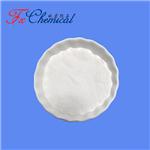
Carbachol
- Product NameCarbachol
- CAS51-83-2
- MFC6H15N2O2.Cl
- MW182.65
- EINECS200-127-3
- MOL File51-83-2.mol
Chemical Properties
| Melting point | 210 °C (dec.) (lit.) |
| Density | 1.2798 (rough estimate) |
| refractive index | 1.5557 (estimate) |
| storage temp. | Desiccate at RT |
| solubility | H2O: 1 g/mL |
| form | crystalline |
| pka | pKa 4.8 (Uncertain) |
| color | white |
| Water Solubility | 1.0 G/ML |
| Sensitive | Hygroscopic |
| Merck | 14,1779 |
| BRN | 3917459 |
| Stability | Hygroscopic |
| CAS DataBase Reference | 51-83-2(CAS DataBase Reference) |
| NIST Chemistry Reference | Carbachol(51-83-2) |
| EPA Substance Registry System | Carbachol chloride (51-83-2) |
Safety Information
| Hazard Codes | T |
| Risk Statements | 25-36/37/38 |
| Safety Statements | 45-36/37/39-28A-26 |
| RIDADR | UN 2811 6.1/PG 2 |
| WGK Germany | 3 |
| RTECS | GA0875000 |
| TSCA | Yes |
| HazardClass | 6.1 |
| PackingGroup | II |
| HS Code | 29239000 |
| Hazardous Substances Data | 51-83-2(Hazardous Substances Data) |
| Toxicity | LD50 in mice (mg/kg): 15 orally, 0.3 i.v. (Molitor) |



